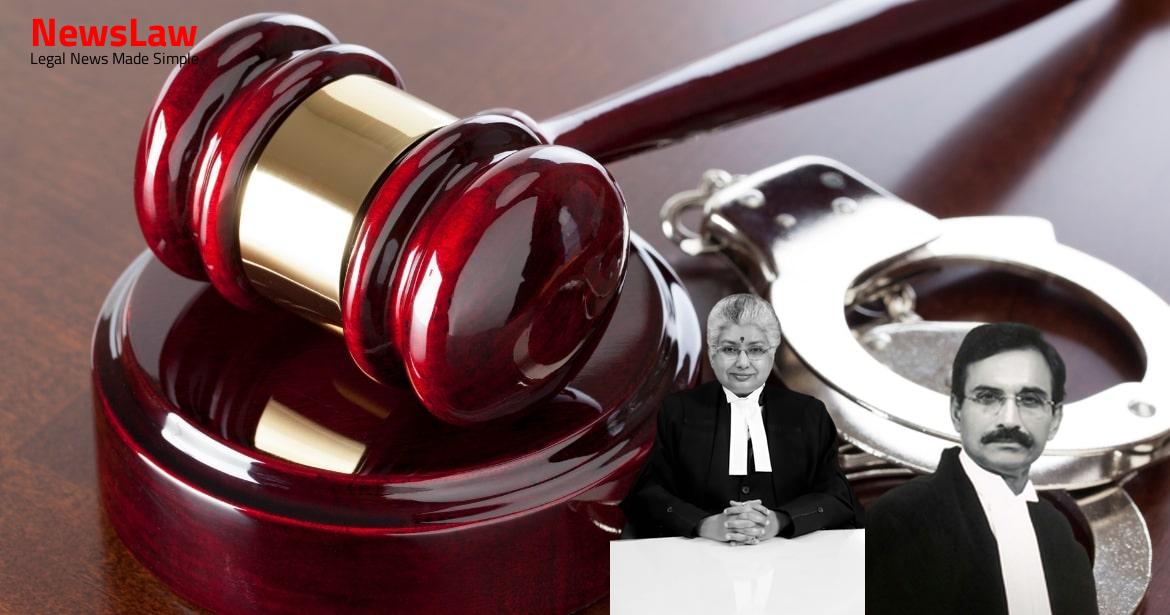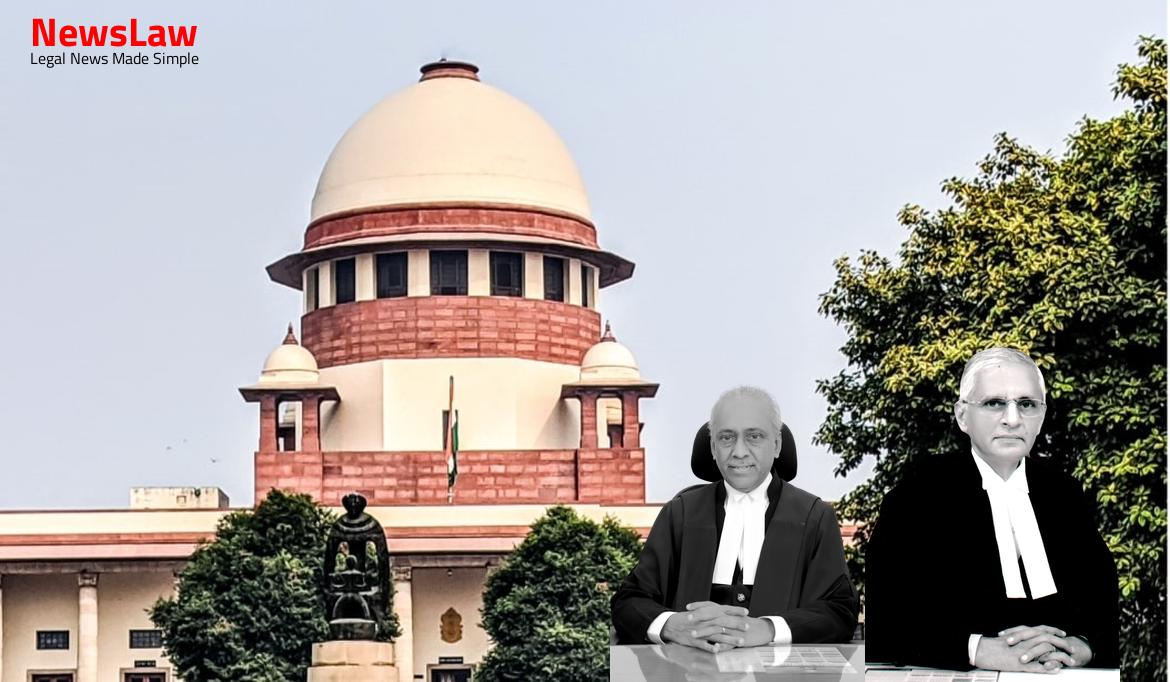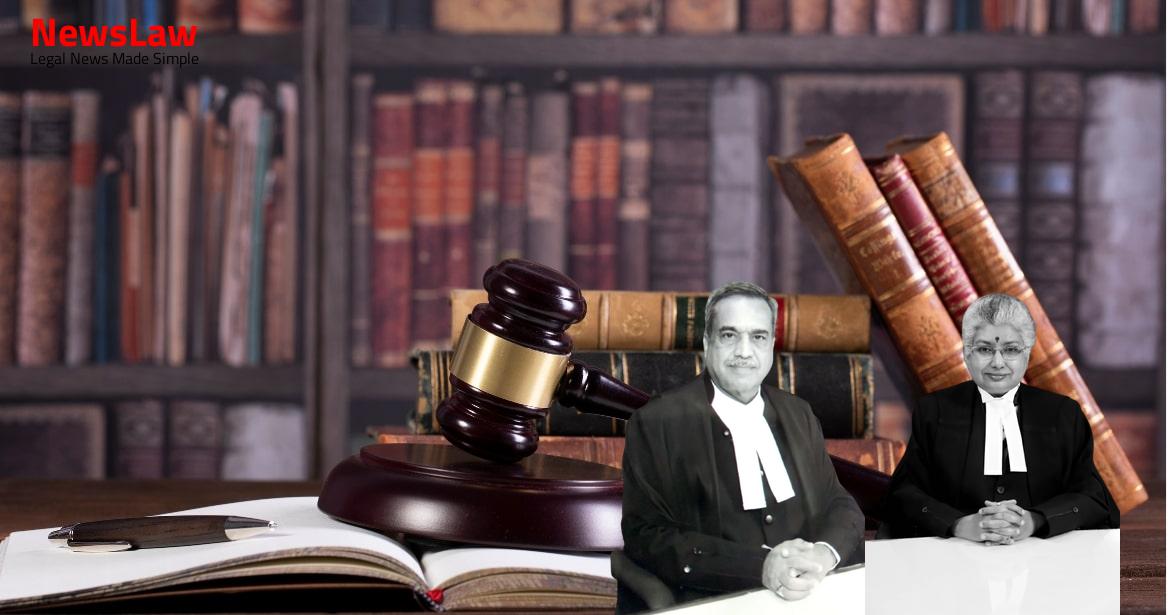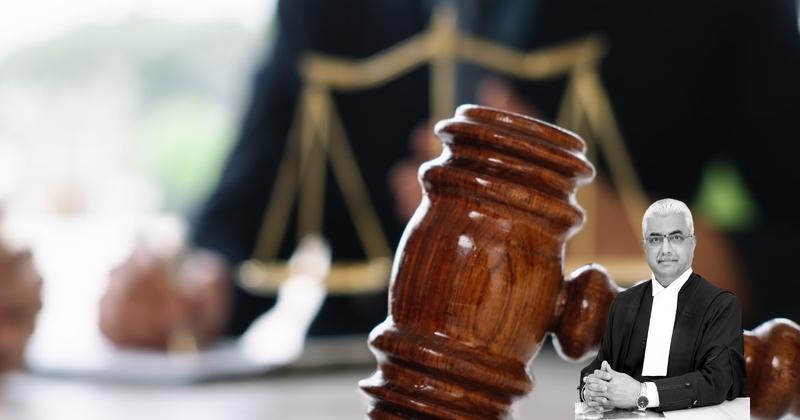Discover the intricate legal analysis presented in a recent court judgment focusing on a conviction case. The court’s thorough examination of witness testimonies, medical evidence, and the application of Section 149 IPC sheds light on the complexities of legal proceedings. Stay tuned to unravel the nuances of the court’s legal interpretation and judgment.
Facts
- The High Court dismissed the appeals filed by the Appellants, upholding the Trial Court’s decision.
- Citing judgments in previous cases, the Court found the accused guilty of causing fatal injuries to the deceased Babulal.
- The discrepancies in witness statements were deemed minor and not enough to declare the Appellants not guilty.
- The Trial Court sentenced the accused to various prison terms for different offenses related to the incident.
- Inconsistencies in testimonies were considered trivial by the Trial Court, and the evidence of the eye-witnesses was deemed credible.
- The High Court upheld the conviction of the Appellants under relevant sections of the law, based on the evidence presented.
- A dispute between Babulal Lodha and Shankarlal (PW-11) and others led to an altercation during the day on 19.08.1995.
- After sunset, a group of individuals armed with various weapons attacked Shankarlal (PW-11) and Babulal Lodha.
- The informant and several witnesses rushed to rescue Shankarlal and Babulal, but they too were attacked by the assailants.
- The accused were charged under multiple sections of the IPC, including Section 302 and 324, alternatively under Sections 147, 302/149, 324/149, 329/149 IPC.
- A total of 21 accused were involved in the incident, with two juveniles also named in the proceedings.
- 14 witnesses were examined on behalf of the prosecution to provide evidence on the events that took place.
Also Read: Reformation vs Retribution: Legal Analysis of Death Penalty Imposition
Arguments
- The Appellants argued that the depositions of witnesses lacked medical evidence regarding the nature and number of injuries, as well as the weapons used by the accused.
- They pointed out the incongruity between the statements of eyewitnesses and the medical evidence, asserting that this discrepancy was crucial for the acquittal of the accused.
- It was emphasized that only Shankarlal (PW-11) witnessed the assault on the deceased, while other injured eyewitnesses arrived later at the scene.
- The Appellants contended that the prosecution failed to establish the elements of Section 149 IPC, thereby challenging their conviction under this provision.
- As a result, they argued that the evidence of witnesses could not be relied upon to convict the Appellants under Section 302 read with 149 IPC.
- PW-11 is an eye-witness to the murder of Babulal.
- Inconsistencies and discrepancies in the evidence of all the eye-witnesses are trivial and cannot be used to the benefit of the Appellants.
- Certain inconsistencies between oral testimony of witnesses and medical evidence exist but cannot lead to reversal of judgments due to overwhelming oral evidence on record.
- The Court does not normally re-appreciate evidence unless assessment by High Court is vitiated by error of law or procedure, or based on error of record, misreading of evidence, or inconsistency with evidence.
- Conviction under Section 302/149 is considered harsh, and an alternate conviction under Section 326/149 is suggested by the Senior Counsel for the Appellant.
- Prosecution argues that interference with judgments of the Courts below is unwarranted given the abundant evidence on record.
Also Read: Landmark Legal Analysis on Culpability in Honour Crimes
Analysis
- The witnesses corroborated the statement of PW-11 about the injuries caused by the Appellants.
- There was an indiscriminate attack by the accused on the deceased and other injured witnesses.
- Contradiction between oral testimony of witnesses and medical evidence was noted.
- Dr. A.D. Bhindurkar identified fatal and simple injuries on the deceased caused by hard and blunt weapons.
- The injuries were likely inflicted by truncheon or luhangi.
- Babulal Lodha succumbed to the injuries, which were caused by a hard and blunt weapon.
- A-20 was carrying a sword, A-9, A-12, A-19 had farsas, and A-11 was armed with a ballam.
- Accused claimed a contradiction between oral testimonies and medical evidence, which needs consideration.
- Shankarlal testified to seeing the accused beating Babulal, with specific actions attributed to different individuals causing his death.
- Inconsistencies between oral evidence and medical opinion were examined in the Amar Singh v. State of Punjab case.
- The court analyzed how inconsistencies in evidence can impact a case.
- The judgment likely delves into how the court resolved or interpreted these inconsistencies.
- Conviction under Section 302/149 not justified due to lack of incised wound on the left knee of the deceased as alleged by a witness
- Witness evidence found to be inconsistent with medical evidence
- Sentence of seven years under Section 326/149 deemed sufficient for justice
- Fatal injury caused by a hard and blunt weapon on the left parietal bone
- Appellants attacked the deceased and injured witnesses with deadly weapons
- Appellants liable to be convicted under Section 326 read with 149 IPC
- No corresponding injury on the weapons used by specific Appellants
Also Read: Reversal of High Court’s Decision on Auction Sale Confirmation
Decision
- The conviction of the Appellants under Sections 325/149, 324/149, 323/149 is confirmed.
- The judgment of the High Court regarding the conviction and sentence of the Appellants under Sections 325/149, 324/149, 323/149 is upheld.
- The conviction under Sections 302/149 is converted to 326/149.
- The sentence of life imprisonment is reduced to seven years for the converted offence.
Case Title: VIRAM @ VIRMA Vs. THE STATE OF MADHYA PRADESH (2021 INSC 772)
Case Number: Crl.A. No.-000031-000031 / 2019



